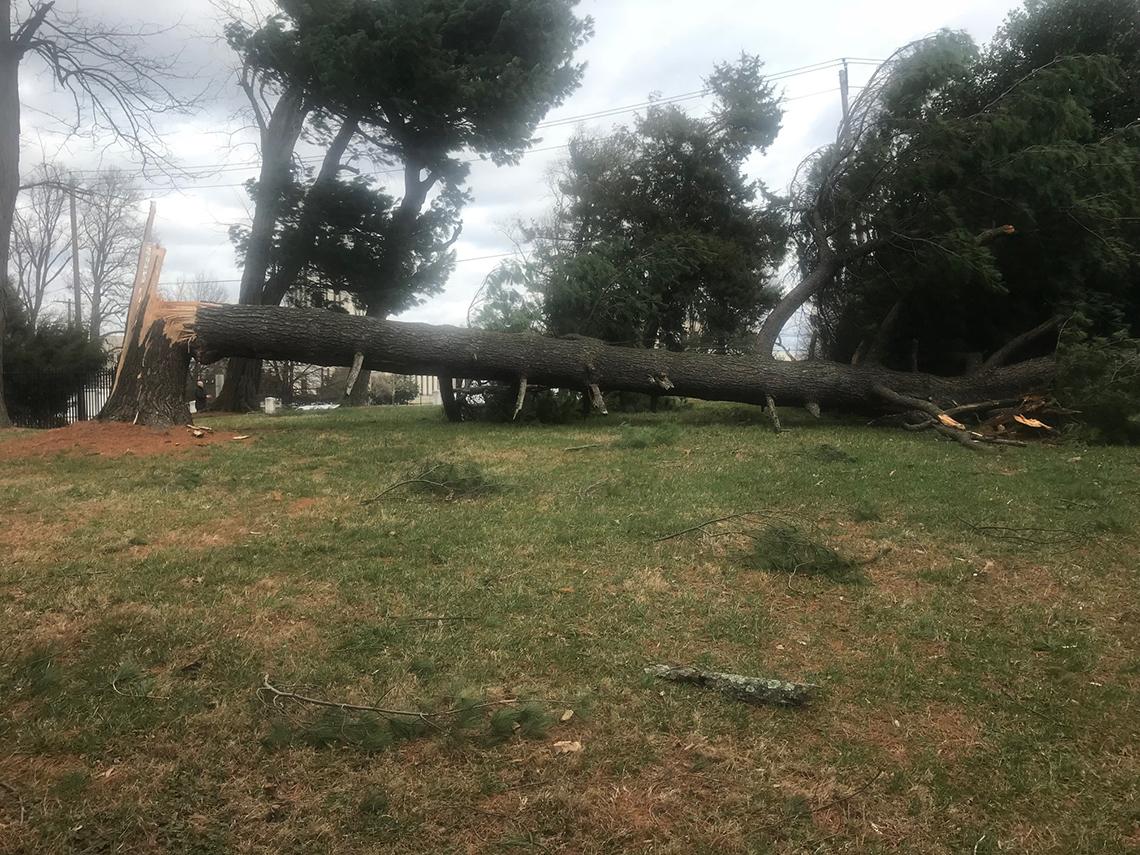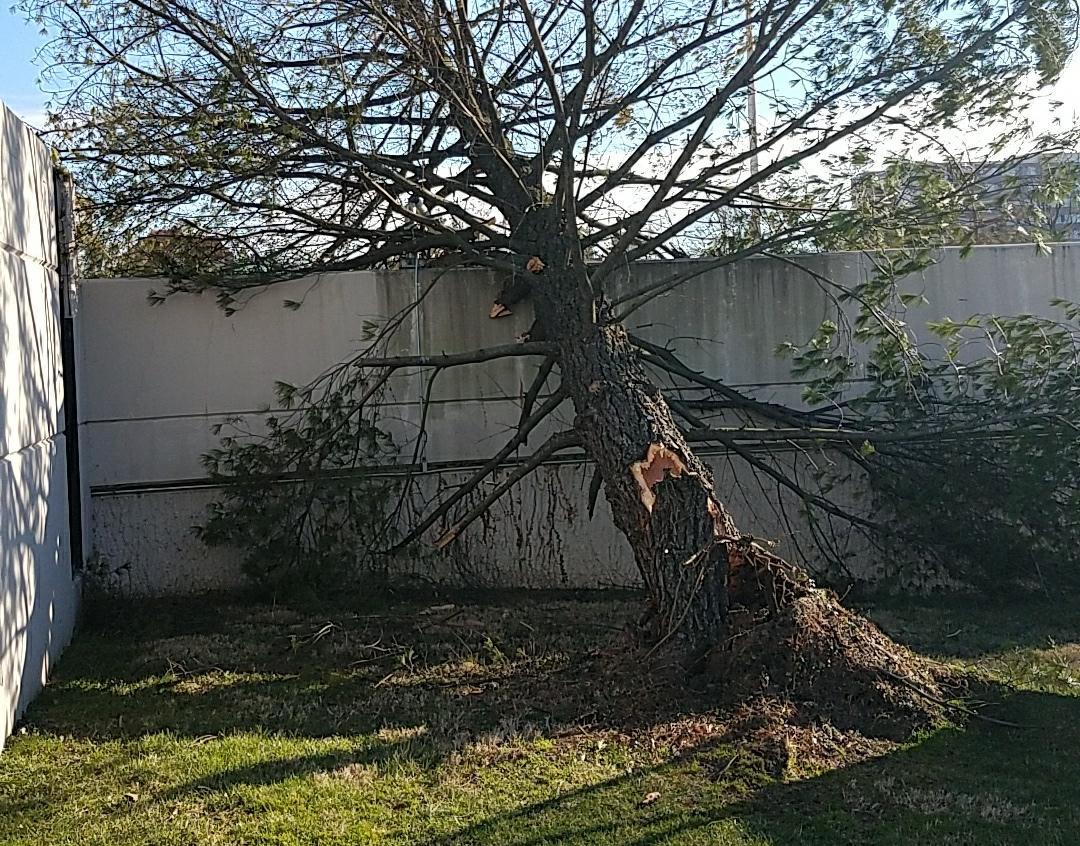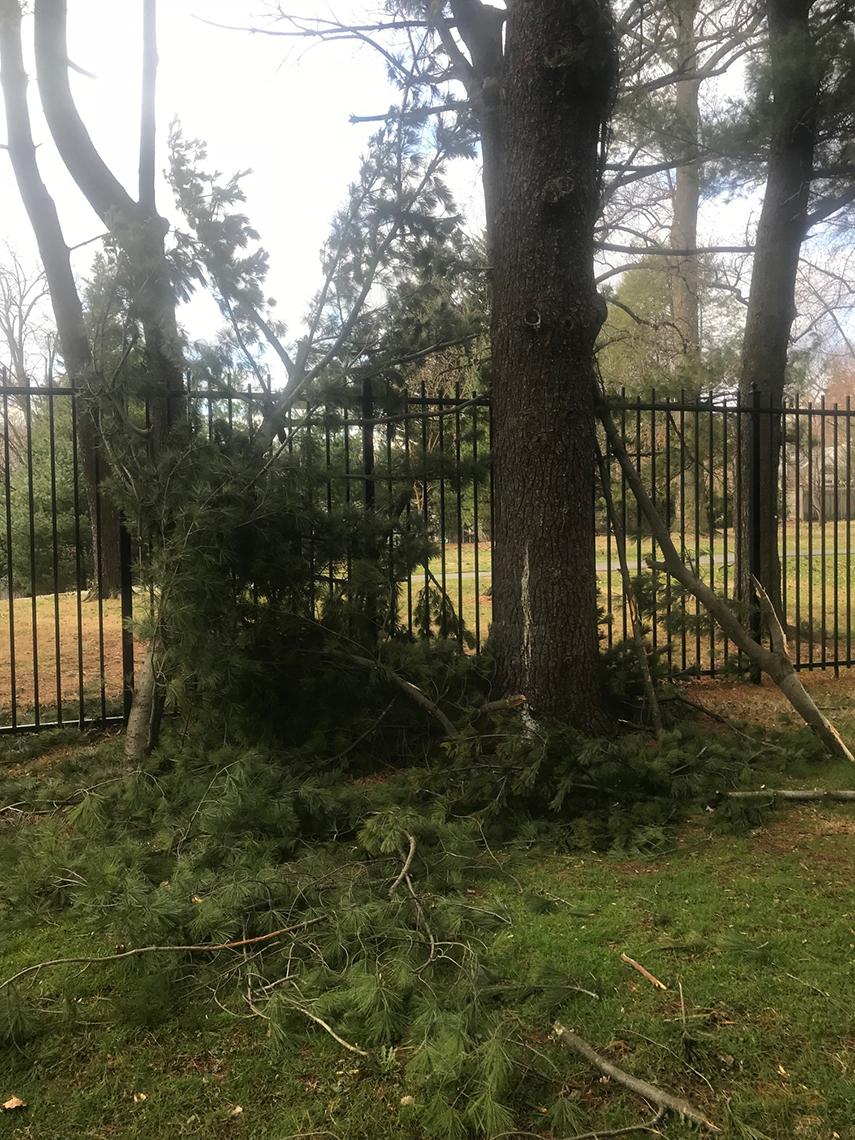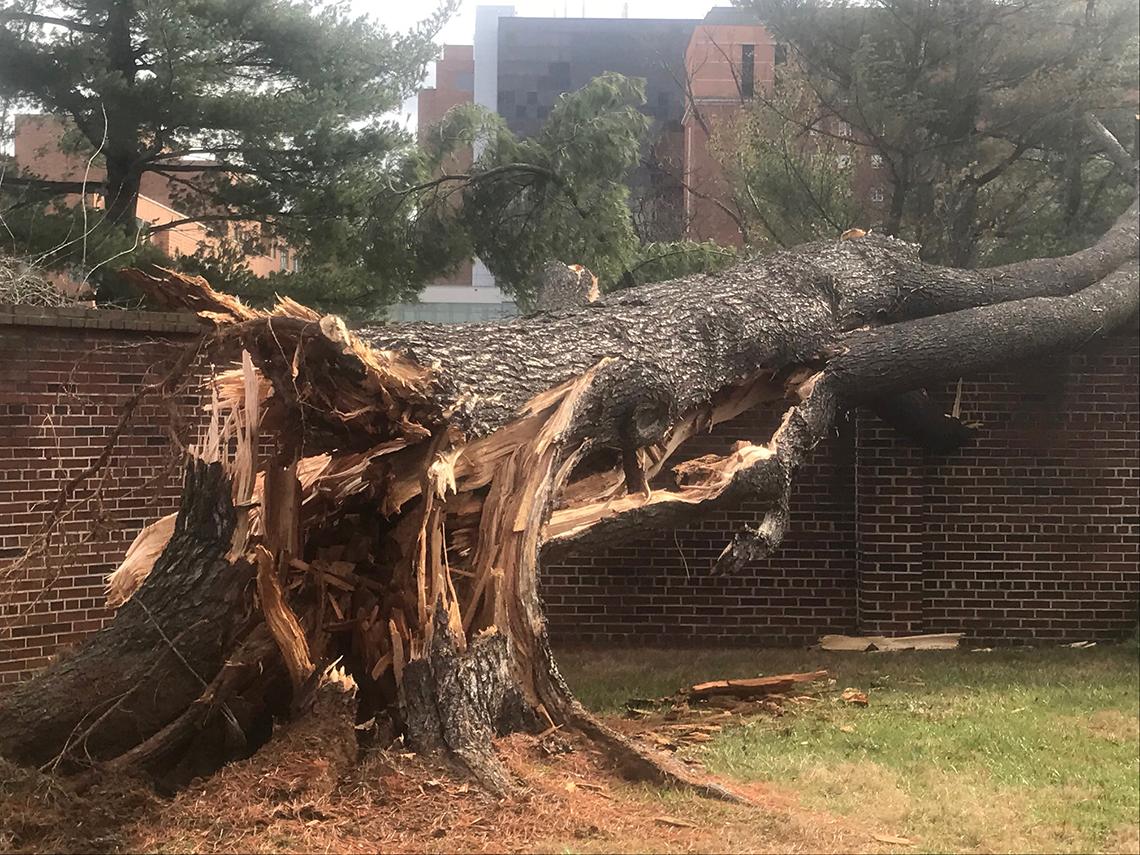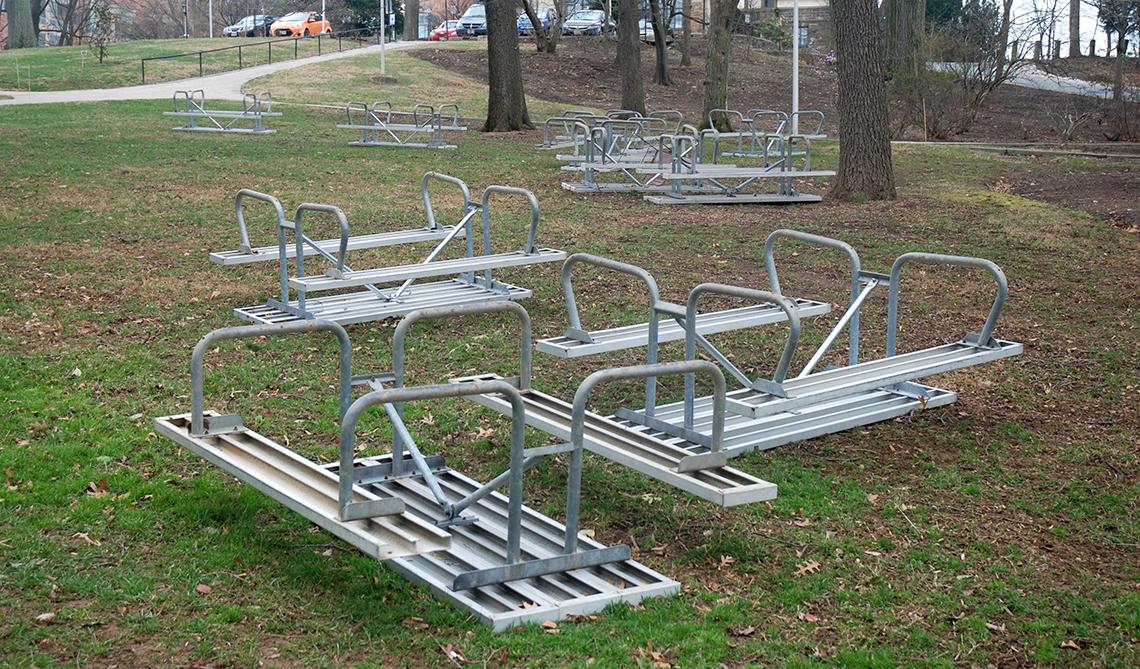Winds from ‘Riley’ Spank NIH Campus, Animal Center
NIH’ers woke up Friday, Mar. 2 to an alert likely never before heard affecting Washington, D.C.-area federal employees: high winds associated with a coastal nor’easter known as Winter Storm Riley—some gusting in excess of 70 m.p.h.—had closed the government for the day.
Storms have closed local federal offices before, but never due to wind alone, as far as anyone can remember. But the closure was prescient; the relentless, raking winds were responsible for downing at least 10 mature trees on the Bethesda campus, said Brandon Hartz, NIH landscape architect in the Office of Research Facilities.
These included six white pines, a hawthorn, a black locust, a slippery elm and a red maple.
“We had many other trees around campus drop large limbs,” said Hartz. “In my opinion, the reason why we saw so many pines affected by the storm is that, as evergreens, they probably endured more force from the high winds than deciduous trees that don’t currently have leaves.
“As evidenced by the photos,” he continued, “some of them had trunks snapped from the force of the winds. When a tree is experiencing a more gradual decline in health like disease or decay, you will often see the tree fall, but the entire tree will tip over bringing a portion of its roots and soil with it. ORF does replace dead/fallen campus trees on a yearly basis with new nursery-grown trees.”
Seven cars were damaged at the Convent Dr. east parking lot, with one car left inoperable, said Peter Moon, ORF facilities program specialist.
Out at the NIH Animal Center in Poolesville, where winds roar in off the Potomac River about 30 miles northwest of Bethesda, damage from Riley was light.
“We had some perimeter security fence damage in four areas from falling trees and a couple of mature trees that blew over on campus, but did no damage,” said David J. Shaw, facility manager at NIHAC. “We were fairly lucky this time.”
Potentially damaging winds had been predicted days before the storm, so NIH had time to prepare. Workers flipped aluminum picnic tables upside down—to lower their risk of becoming projectiles—and in some cases chained them together.
“Tree cutting equipment was brought on campus the day before the storm, including bucket trucks, wood chippers and trucks for hauling large trees,” said Moon. “Extra personnel with additional chainsaws were also added. The contractor and I were also present to assess the campus continuously before, during and after the storm. Crews were also assigned to patrol the campus during the storm to pick up any fallen debris or loose items blowing around.”
Other preparations included campus-wide inspection for loose items including tables, trash bins, cigarette-butt cans and signs that needed either tightening or removal, said Reginald Stewart, chief of the Maryland Facilities Management Branch, ORF. “We also check roofs to make sure all items were secured,” he added.—Rich McManus

